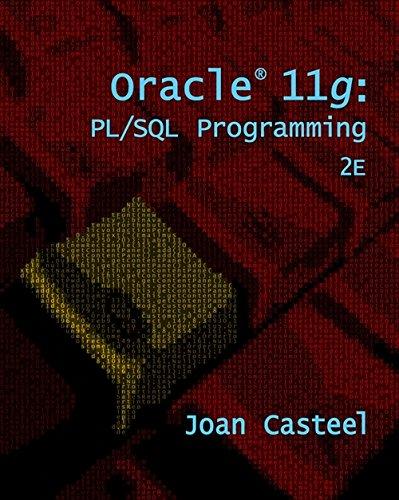Question
4-7 Monge arrays An m x n array A of real numbers is a Monge array if for all i , j , k, and
4-7 Monge arrays
An m x n array A of real numbers is a Monge array if for all i , j , k, and L such
that 1 <=i < k <= m and 1 <= j < L<= n, we have
A[i,j]+A[k,L]<=A[i,L] + A[k,j].
In other words, whenever we pick two rows and two columns of a Monge array and
consider the four elements at the intersections of the rows and the columns, the sum
of the upper-left and lower-right elements is less than or equal to the sum of the
lower-left and upper-right elements. For example, the following array is Monge:
10 17 13 28 23
17 22 16 29 23
24 28 22 34 24
11 13 6 17 7
45 44 32 37 23
36 33 19 21 6
75 66 51 53 34
a. Prove that an array is Monge if and only if for all i = 1; 2,m - 1 and
j = 1, 2, n-1, we have
A[i,j] + A[i+1, j+1]<=A[i,j +1] + A[i, +1,j]
(Hint: For the b. The following array is not Monge. Change one element in order to make it Monge. (Hint: Use part (a).) 37 23 22 32 21 6 7 10 53 34 30 31 32 13 9 6 43 21 15 8 c. Let f (i) be the index of the column containing the leftmost minimum element of row i . Prove that f(1)<=f(n)<=.<= f(m) for any m x n Monge array. (5 points)
Step by Step Solution
There are 3 Steps involved in it
Step: 1

Get Instant Access to Expert-Tailored Solutions
See step-by-step solutions with expert insights and AI powered tools for academic success
Step: 2

Step: 3

Ace Your Homework with AI
Get the answers you need in no time with our AI-driven, step-by-step assistance
Get Started


